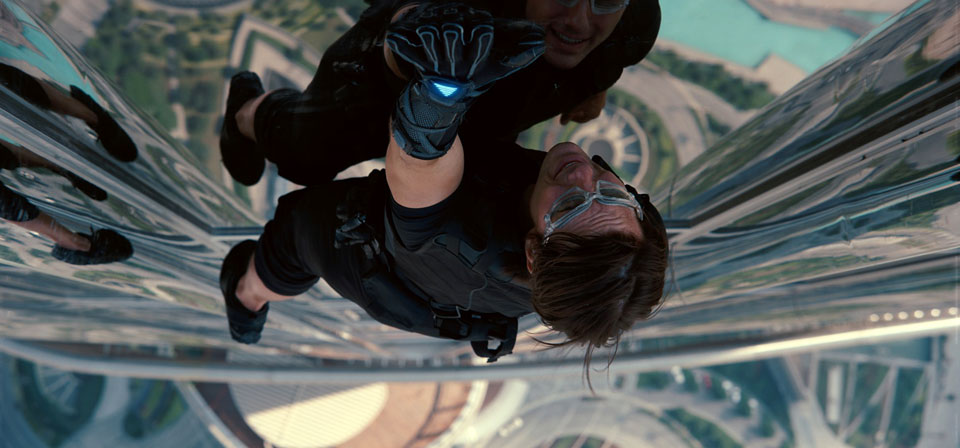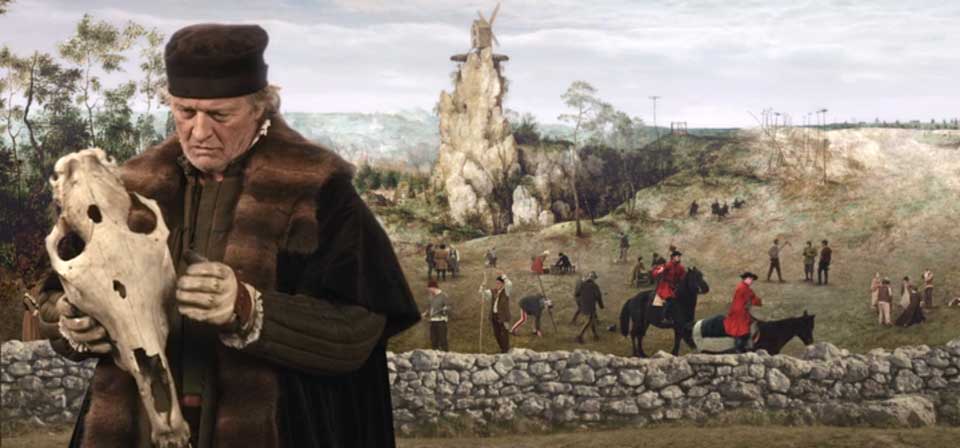Reviews
We Have a Pope [Habemus Papam] (2012)
In a way it’s like the antithesis of a Dan Brown novel. Brown’s stories peer with feverish, lurid imagination at the inner workings of the Catholic hierarchy, discovering all manner of ridiculous subterfuge, ruthlessness and skulduggery. Moretti’s film hardly peers at all.
Mirror Mirror (2012)
What’s the last movie you saw that created an imaginary world that was actually beautiful, bursting with color and beauty and inspiration? A world that reminded you of the feeling you had as a child the first time you saw Dorothy open that door on the Technicolor world of Oz? A world you would actually like to enter and walk around in?
Wrath of the Titans (2012)
“Let’s have some fun,” says one god to another, suggesting that they “put on a show.” The moment comes late in Wrath of the Titans. Very, very late. I don’t remember the response, if any, but “Why start now?” would have been appropriate.
October Baby (2011)
October Baby is at its most thoughtful contemplating Hannah’s unresolved feelings about her biological mother and the tragic way that her life began.
The Hunger Games (2012)
Suzanne Collins says she got the idea for The Hunger Games while sleepily flicking channels between some reality-show game and footage of the invasion of Iraq until the images began to blur in her mind. What’s bracing about Gary Ross’ film of the first book in Collins’ wildly popular young-adult trilogy is that the topicality of the story’s origins still comes across. When was the last Hollywood science-fiction action blockbuster that felt like actual ideas about the world we live in were at stake?
John Carter [of Mars] (2012)
Burroughs didn’t invent science fiction, but he perhaps created a genre of serial sci-fi fantasy adventure, with an idealized action hero going from one extraterrestrial adventure to another. Carter’s closest literary ancestor may be Sinbad from One Thousand and One Nights, which is saying something. Buck Rogers, James Kirk and Luke Skywalker are all his descendants, and Jake Sully — the hero of Avatar, which really is a patchwork borrowing from everything Burroughs inspired — is perhaps more indebted to John Carter than any other character in history.

The Lorax (2012)
Well … its heart’s in the right place. Give the filmmakers that. / This isn’t The Grinch or The Cat in the Hat. / It’s not outright ugly, though it slips off the rails. / It wants to be decent. It tries. But it fails.

The Secret World of Arrietty (2012)
The Secret World of Arrietty just might change the way you look at the world around you — right around you. A wide-eyed sense of discovery and revelation permeates the film, and what it reveals is … the mystery and wonder of an ordinary home.
The Grey (2012)
The Grey is a thoughtful, tough-minded little tale of survival and attrition that sets its sights a bit further than its firepower takes it.
The Woman in Black (2012)
For Harry Potter star Daniel Radcliffe, who stars as a young solicitor named Arthur Kipps, The Woman in Black is an opportunity to make a reasonably graceful break from the role that has dominated his life since childhood. For the new owners of England’s legendary Hammer horror brand, until recently dormant from the 1970s, it’s an opportunity to stake their claim to continuing in the tradition of Terence Fisher, Jimmy Sangster et al. For curious movie watchers, it’s an opportunity to see how Radcliffe does in another role — and how an old-fashioned haunted house story plays today.
War Horse (2011)
In War Horse Spielberg harkens back to an earlier cinematic age, creating something more like a Golden Age Hollywood epic than any film I’ve seen in years, the one other notable example being Baz Luhrmann’s Australia.
The Adventures of Tintin: The Secret of the Unicorn (2011)
Tintin in the comics was the perpetual small-town boy next door. Tintin in the movie is like the boy next door who’s been watching “Mantracker,” “Man vs. Wild” and “Mythbusters” for so long that he’s completely jaded to reality.

Mission: Impossible – Ghost Protocol (2011)
Brad Bird’s Mission: Impossible - Ghost Protocol is so preposterously entertaining that it makes watching other recent Hollywood action spectacles feel like work. What in the last few years even compares to it?
The Muppets (2011)
This is quite deliberately not a reboot or reimagining or any such thing. Perhaps we can call it a revisiting. Like this summer’s charming Winnie the Pooh (also from Disney), The Muppets is a happy throwback, very much of a piece with material that my generation grew up with, eclipsing the lameness of recent direct-to-video efforts. Who would have thought two classic family franchises that have lain fallow for so long would be reborn in the same year?
Happy Feet Two (2011)
Little ones are “tougher than we think,” a penguin remarks in Happy Feet Two, and you can tell director George Miller believes it. The animated sequel pulls few punches: It’s overshadowed by more darkness, menace, heartache and anxiety than any talking-animal picture I can think of since, well, Miller’s last family-film sequel, the execrable Babe: Pig in the City. Neither the classic Babe nor the original Happy Feet contained any hint of the darkness of the sequels. Apparently Miller’s strategy is to soften kids up first, then drop the bomb.
J. Edgar (2011)
The life and work of J. Edgar Hoover offers grist for a dozen different movies or more, and Clint Eastwood’s J. Edgar wants to be all of them at once. It’s the sort of staidly respectable, competently directed biopic that gives a bad name to competently directed biopics, and possibly to respectability.
Puss in Boots (2011)
Banderas’s swashbuckling Puss in Boots first appeared in Shrek 2, quickly establishing himself as one of the most popular supporting characters in the franchise. Now in a starring role in this spinoff, Puss spins the story in a direction strikingly different from the Shrek films.
The Mighty Macs (2011)
The movie is full of Catholic iconography that Catholic viewers and fans of Golden Age Hollywood Catholicism will appreciate. Statues of Jesus, Mary and the saints are everywhere. I compared the movie’s Catholic milieu to a Bing Crosby film, but a Crosby film would actually have edgier personalities and more conflict.

The Mill & the Cross (2011)
There is a moment in The Mill & the Cross in which the power of art, in particular sacred art, to capture the eternal in the hugger-mugger of ordinary life — even in the most horrific and seemingly meaningless events — is revealed with stunning clarity. André Bazin, the great Catholic film critic and theorist, wrote about the mission of art to rescue the world from transience and corruption, to capture moments and events in time and space before they slip into the irretrievable past, and so bear witness to the hand of God in creation. I don’t know if I’ve ever seen this idea more resoundingly affirmed than in The Mill & the Cross.
Footloose (2011)
The upshot is that this new Footloose is a dumbed-down, sexed-up take on a story that was already risqué and not too bright — one that shies away from the ’84 film’s critique of the church, but is also further from its lingering Christian worldview.
Recent
- Benoit Blanc goes to church: Mysteries and faith in Wake Up Dead Man
- Are there too many Jesus movies?
- Antidote to the digital revolution: Carlo Acutis: Roadmap to Reality
- “Not I, But God”: Interview with Carlo Acutis: Roadmap to Reality director Tim Moriarty
- Gunn’s Superman is silly and sincere, and that’s good. It could be smarter.
Home Video
Copyright © 2000– Steven D. Greydanus. All rights reserved.